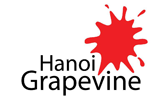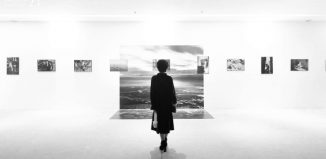Acting towards art heritage: A conversation with curator Vũ Đỗ and the daughter of painter Phan Kế An
By Uyên Ly for Hanoi Grapevine and the family of Phan Kế An
Edited by Hoàng Huế
Photos courtesy of painter Vũ Đỗ
Kindly credit Hanoi Grapevine when sharing the article
Please do not copy parts or the entirety of the article without permission
The exhibition “Phan Kế An – Hidden treasures”, held by Institut français in Hanoi – L’Espace from March 13 to April 16, introduces to art enthusiasts for the very first time the unpublished art pieces by Phan Kế An – a great painter of Vietnamese art. The exhibition is curated by artist Vũ Đỗ. A conversation taking place on March 13 between curator Vũ Đỗ and Phan Mai Thanh Thúy, the second daughter of Phan Kế An, under the moderation of journalist Trương Uyên Ly, presented honest and candid stories about Phan Kế An, as well as a new viewpoint on preserving, restoring and acting towards art heritage.
As a young artist, what are Vũ Đỗ’s thoughts on the role and values of painter Phan Kế An in art?
I only knew about his work Remembering a Northwestern Afternoon in Vietnam National Fine Arts Museum, as the piece won numerous awards, and I also read about him on the news. In the school curriculum on Vietnamese art during the time of Indochina, we only learn of Lê Phổ, Mai Trung Thứ… There was not a lot of information on Phan Kế An on the Internet or in textbooks. So I was very curious about the artist. That was my first piece of information. Vague and lack of knowledge. When I saw the piece Remembering a Northwestern Afternoon, there was something special about it. It is quite unusual, a colour palette unlike other lacquer paintings of the same period. The greens are peculiar, for instance. And it appeared in numerous newspapers, almost a symbol of the resistance against the French. The image of soldiers marching down the mountain at the time was controversial, as the spirit of revolutionary art at that time is to march forward.

What was he like as a person, Ms. Phan Mai Thanh Thúy?
My mother was a secondary school teacher, and my father made a living through commissions, we were very poor at the time so she usually urged him to paint to earn money. He was the breadwinner in the family and was very responsible. When I was little, I thought he was a doctor because he always took care of our health. He also taught us often, teaching my sister Russian, and me Mathematics. He was witty, funny, loved by all his friends, and often helped his pals when they were down on their luck.
What was the most recognisable characteristic in Phan Kế An’s personality?
When he became old and weak, I often accompanied him to events. And I remember very well the stories he told when he was interviewed on TV. During the resistance war, he often accompanied with the late General Secretary Trường Chinh (Trường Chinh was a senior leader of Vietnam, holding key positions such as the General Secretary of the Vietnamese Communist Party from 1941 to 1946 and in 1987, and Chairman of the National Assembly’s Standing Committee from 1960 to 1975 – additional information provided by Hanoi Grapevine) to attend to patients. When the doctor was busy, Trường Chinh would bring him along, at first people were sceptical, but when they recovered under his treatment, they all expressed gratitude towards him.
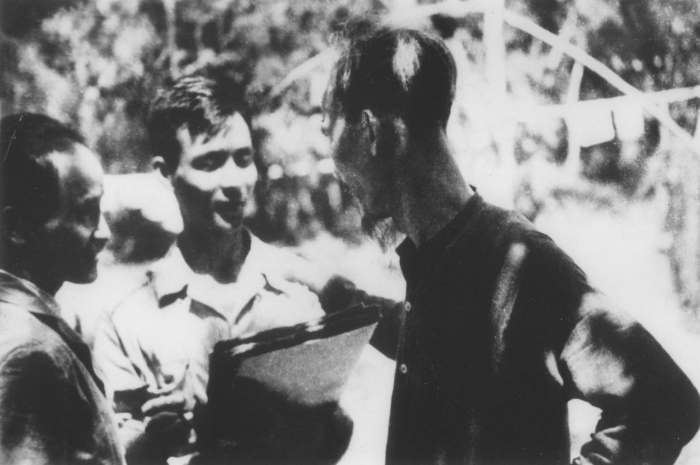
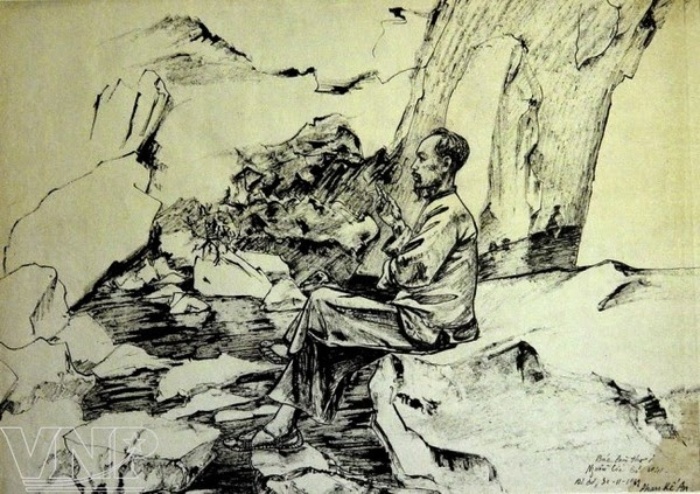
Why does the family decide to hold and make public the first solo exhibition for Phan Kế An now, while he was already a famous name in the country’s art scene?
Phan Mai Thanh Thúy: He only had group exhibitions back in the days, he also never had enough paintings to have an exhibition, because just as a piece was finished and the paint had not even dried, it was already taken away. We have always wanted to have enough of his paintings to hold an exhibition. When he fell ill we were all busy taking care of him, now that he is gone and passed down his legacy to us, we hope to do something to pay tribute to him. And by coincidence I met Vũ Đỗ, the son of a close friend. After taking a look at the paintings, Vũ Đỗ proposed to hold an exhibition and preserve the art works.
Curator Vũ Đỗ: The first time I met Phan Kế An (he was 92 years old at the time) was when he was still living on Thợ Nhuộn Street. He was bedridden at the time. Even though he was frailing due to old age, he still led a rich spiritual life, he drank wine, had a fish tank in his room, read newspapers, and his flower vase always had a few branches of yellow orchids. When he passed away, I was not able to attend the funeral. Upon hearing that his family is moving to another house, I came over and helped Thúy clean up. Already interested in art preservation and restoration, I came by to see if there was anything that I could help, as in this climate, the paintings could easily deteriorate if not stored correctly. His paintings were stacked on top of one another on top of a cabinet in the altar room. I thought they needed to be stored in a different way.
Going through his belongings, I discovered many amazing and interesting things, they bear the artist’s memories that we can study further, on a whole generation that we have lost touch with. I listed out what was left, from the easel, the canvas, books, to the artworks… and planned for what should be done. These are precious things that were carefully and meticulously wrapped. Some pieces of the legacy seem so small, for example a book with marks and notes, showing historical clues and evidence from a human being. I am very touched and amazed by his way of working and thinking. I really want his artworks to be stored in a better condition. Many ideas and opportunities on how to continue maintaining his legacy came into my mind.
Why did the family decided to hand over the legacy of Phan Kế An to Vũ Đỗ for preservation?
Phan Mai Thanh Thúy: Vũ Đỗ’s mother and I have been close friends for a long time. I know Vũ Đỗ used to study in the US, and when he return he stand on his own two feet, not asking for anyone’s help but seeking opportunities to advance in his career himself. Towards my father’s legacy, Vũ Đỗ respects and wants to learn more about his legacy. That is why our family decided to give Vũ Đỗ what my father had left behind, so that Vũ Đỗ can do for him what we cannot.
What is it that the family cannot do but Vũ Đỗ can?
Phan Mai Thanh Thúy: When our family moved to a new house, we could only put his things neatly in one place, and his health was no longer in good shape that he could not give us a thorough instruction. Things like gold and silver, oil paints, paintbrushes, documents from his days in Russia, documents from the resistance war… We moved these things to the new house however he packed them and left them as they were.
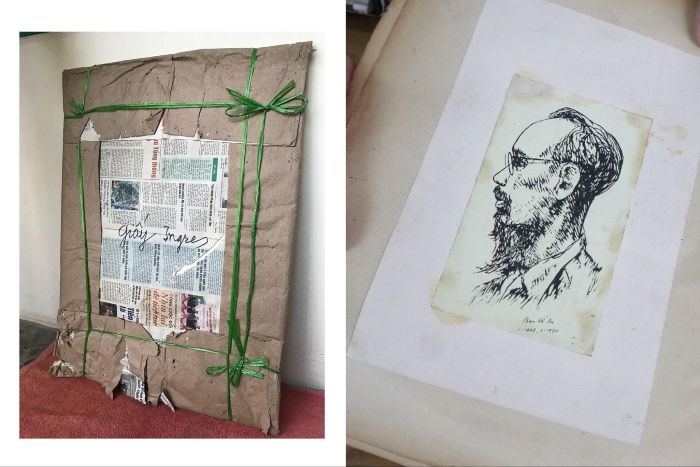
Vũ Đỗ: When I received the collection, I decided to divide them into groups: those have not deteriorated, those need preservation, those need restoration, and determine the critical status of each piece. As for the books, I need to make a list of everything there is, clean them, and categorise them from old, near-new, to new. As for scientific papers, I need to check if there are any special remarks. Then the art supplies: paper, palette… As for the paintings there are finished and unfinished works, including three lacquer paintings, one oil painting, one silk painting and a casual sketchbook.
I was very surprised about the casual sketchbook, the famous cultural figures we once heard of now appear in amusing portrait sketches, such as Anh Thơ, Tố Hữu, Thạch Lam, Nguyên Hồng, Kim Lân… And Thúy said that he arranged the sketches, put it on another layer of paper and scanned them himself to give as presents to his friends. Study pieces (for anatomy) from when he went to school at the Repin Academy in Russia also show how diligent he was in his learning. For unfinished works, I need to search for the clues, the painting of the young lady next to the lotus for example, or that of the Russian girl that was transformed into a lacquer piece. First and foremost I think about how to preserve them, and then present them to other people.
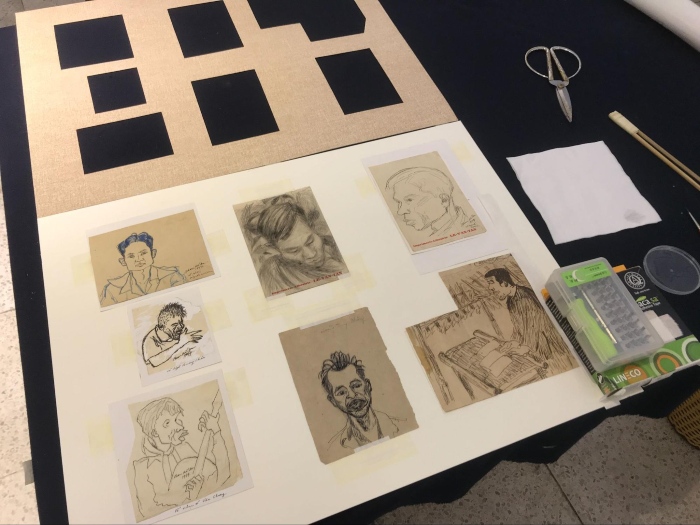
When Vũ Đỗ propose to restore the artworks, did the family have any concern?
Phan Mai Thanh Thúy: We were a little bit concerned at first as we were scared the pieces would be ruined. But when Vũ Đỗ introduced us each step in the restoration process, I quite trust him with his methodical execution. When the process was finished, I was completely pleased.
Vũ Đỗ: If nothing changes about these works’ condition, they will quickly deteriorate, so I form a restoration team. However, there have only been two pieces restored due to limitations in terms of budget, infrastructure and human resources. This industry has not yet developed in Vietnam with no formal training offered. For lacquer paintings, the team can only transfer the works into a stable environment and make the frames. This is a complex collection of various media. In terms of expertise, it requires numerous factors to complete. In the long term, there is a lot to develop. In terms of academic study, there is a lot more to learn. One unfinished lacquer painting for instance, the artist already applied a layer of lacquer but did not proceed to polishing. For unknown reasons he decided to not polish it and leave it as it was. Using science we could discover many more things, each brushstroke, each layer of lacquer, the method, the medium… Thanks to quality materials, the painting is in good condition with no damage. And the piece must have a special meaning to him that it was kept and not sold, like the piece of a foreigner or the young lady next to the lotus. Why did he sell the other piece but not this one?
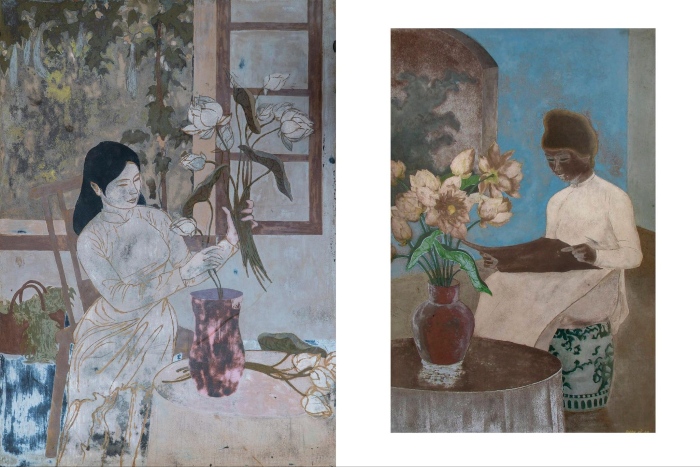
Lacquer painting on the left: The unpolished lacquer work at painter Phan Kế An’s house.

Framing paper paintings also takes a lot of time and effort, for example when framing a paper art piece we need to consider what the frame should be like, what type of adhesive tape to use, and the tape needs to be acid-free… Or the casual sketches, putting small pieces into the frame is time consuming, cutting out and treating each section. Because the paper sheets are either old and falling apart, or were drawn on both sides, one depicts writer Thạch Lam and the other painter Trần Văn Cẩn so we cannot decide who to put on the front./
Thank you Phan Mai Thanh Thúy and curator Vũ Đỗ for spending time to chat with us!
About painter Phan Kế An
Part of the generation of fine art artists during the period of Indochina, Phan Kế An (1923 –2018) – also known by his pseudonym Phan Kích – was considered a multi-talented painter, and a great virtuoso of Vietnamese art in the 20th century.
He studied at the Indochina College of Fine Arts – École des Beaux-Arts de l’Indochine (1944-1945) and was one of the first members of Vietnam Fine Arts Association.
He found success in lacquer painting and oil painting, his most famous piece is “Nhớ một chiều Tây Bắc” (Remembering a Northwestern Afternoon – 1950), the painting that inspired painter – poet Đoàn Việt Bắc to write the poem and musician Vũ Thanh to composed the song of the same name. He was also the first artist allowed to sketch the portrait of President Hồ Chí Minh in 1948 at Việt Bắc military base with around 20 artworks.
Phan Kế An received a National Literature and Arts Award (2001) for his contributions to Vietnamese art.
About curator – artist Vũ Đỗ
Vũ Đỗ is an artist and art educator from Hanoi whose practice revolves around sharing and disseminating art to the public. Vũ Đỗ received a BFA from Pennsylvania Academy of the Fine Arts (PAFA) and has been teaching studio art and art appreciation at Vincom Center for Contemporary Arts (VCCA), University of Fine Arts Vietnam, Vietnam National University, etc. He is the founder of The Painter’s Studio, an art school in Hanoi with a mission of raising public awareness, appreciation and understanding of the arts. He is currently researching various pigments and techniques of Northern Vietnamese painting from the 17th to the 19th century.
